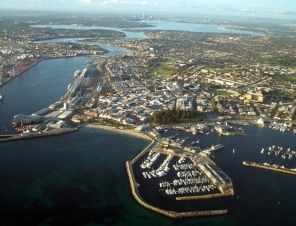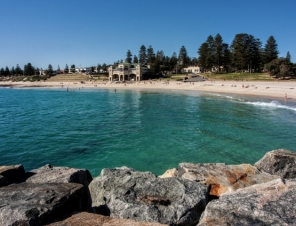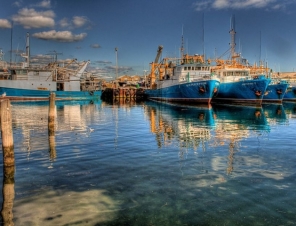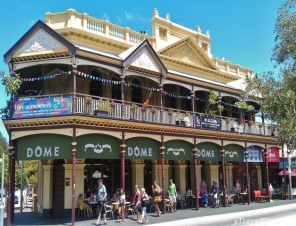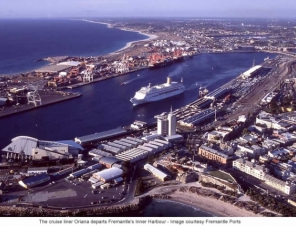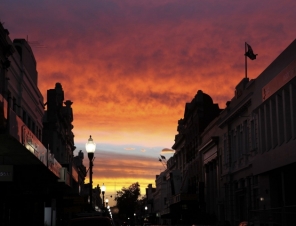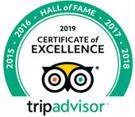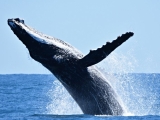
FRE-5 | Whale Watch Tour | 2.00 hrs
Whale Watch experts will guide you through the cruise providing in-depth knowledge of the whales as they pair up with their partners on their journey north and their return migration south with new born calves. An underwater camera and hydrophone allows you to watch and listen to the dinosaurs in their natural habitat.

FRE-6 | Whale Watch VIP Tour | 2.00 hrs
Treat yourself on this adult only first class VIP Captains Lounge experience. Whale Watch experts will guide you through the cruise providing in-depth knowledge of the whales as they pair up with their partners on their journey north and their return migration south with new born calves.
Fremantle is located at the mouth of the Swan River in Western Australia and serves as the port for Perth, the state capital. Fremantle was the first area settled by the Swan River colonists in 1829 and was declared a city in 1929.
The city is named after Captain Charles Howe Fremantle, the English naval officer who had pronounced possession of Western Australia and who established a camp at the site. The city contains well-preserved 19th-century buildings and other heritage features.
The traditional owners of the land on which the city of Fremantle is built are the Whadjuk Noongar people who called the area Walyalup ("the place of crying").
To the local Noongar people, Fremantle is a place of ceremonies, significant cultural practices and trading. Anglesea Point and the limestone hill area at Arthur Head (where the Round House prison stands) to Point Marquis was called Manjaree, an important meeting place where bush paths converged and a major trading place for Whadjuk and neighbouring Noongars.
Today, Whadjuk and other Noongars continue to gather and meet in Walyalup and at Manjaree.
The area was considered as a site for possible British settlement in 1827, when Captain James Stirling, in HMS Success, explored the coastal areas near the Swan River. His favourable report was welcomed by the British Government, who had for some time been suspicious of French colonial intentions towards the western portion of Australia. As a result of Stirling's report, Captain Charles Howe Fremantle of HMS Challenger, a 603 ton, 28-gun frigate, was instructed to sail to the west coast of Australia to establish a settlement there.
On 2 May 1829, Fremantle hoisted the Union Flag in a bay near what is now known as Arthur Head, and in accordance with his instructions, took formal possession "of the whole of the West Coast of New Holland" in the name of George IV of the United Kingdom.
Western Australia Day (formerly Foundation Day) is observed on the first Monday in June, although it was actually on 2 June 1829 that Captain James Stirling on the Parmelia arrived with Surveyor-General Roe and the first contingent of immigrants to set up the Swan River Colony. The settlement of Perth began on 12 August 1829.
Captain Fremantle left the colony on 25 August after providing much assistance to Stirling in setting up the colony. It was then that Stirling decided to name the port settlement "Fremantle".
On 1 June 1850, the first convicts arrived at Fremantle aboard the Scindian. The thirty-seventh and last convict ship to dock at Fremantle was the Hougoumont on 10 January 1868, signalling the end of penal transportation to Australia. Among the 280 convicts on board were 62 Fenian military and political prisoners—members of the Irish Republican Brotherhood—six of whom managed to escape the Convict Establishment in the Catalpa rescue of 1876. During this period, notorious South Sea pirate Bully Hayes lived in Fremantle with his fiancee Miss Scott, daughter of the Fremantle Harbour Master.
In 1897, Irish-born engineer C. Y. O'Connor deepened Fremantle Harbour and removed the limestone bar and sand shoals across the entrance to the Swan River, thus rendering Fremantle a serviceable port for commercial shipping. This occurred at the height of the late 19th century Western Australian gold rush, transforming Fremantle into a capital of trade and gateway for thousands of gold miners to the inland boom towns of Coolgardie, Kalgoorlie and Southern Cross.
Camels and their Afghan drivers were familiar sights, and by-laws regulating the driving of camels through the streets of Fremantle were enacted. The wealth generated during this period resulted in the construction of several prestigious hotels throughout Fremantle. Fremantle still serves as the chief general seaport for Western Australia, though far greater tonnages are exported from the iron-ore ports of the Pilbara.
How far is the city of Perth from the cruise port?
It is 20 kilometers to the city of Perth from the Cruise terminal at Fremantle.

 |
|





